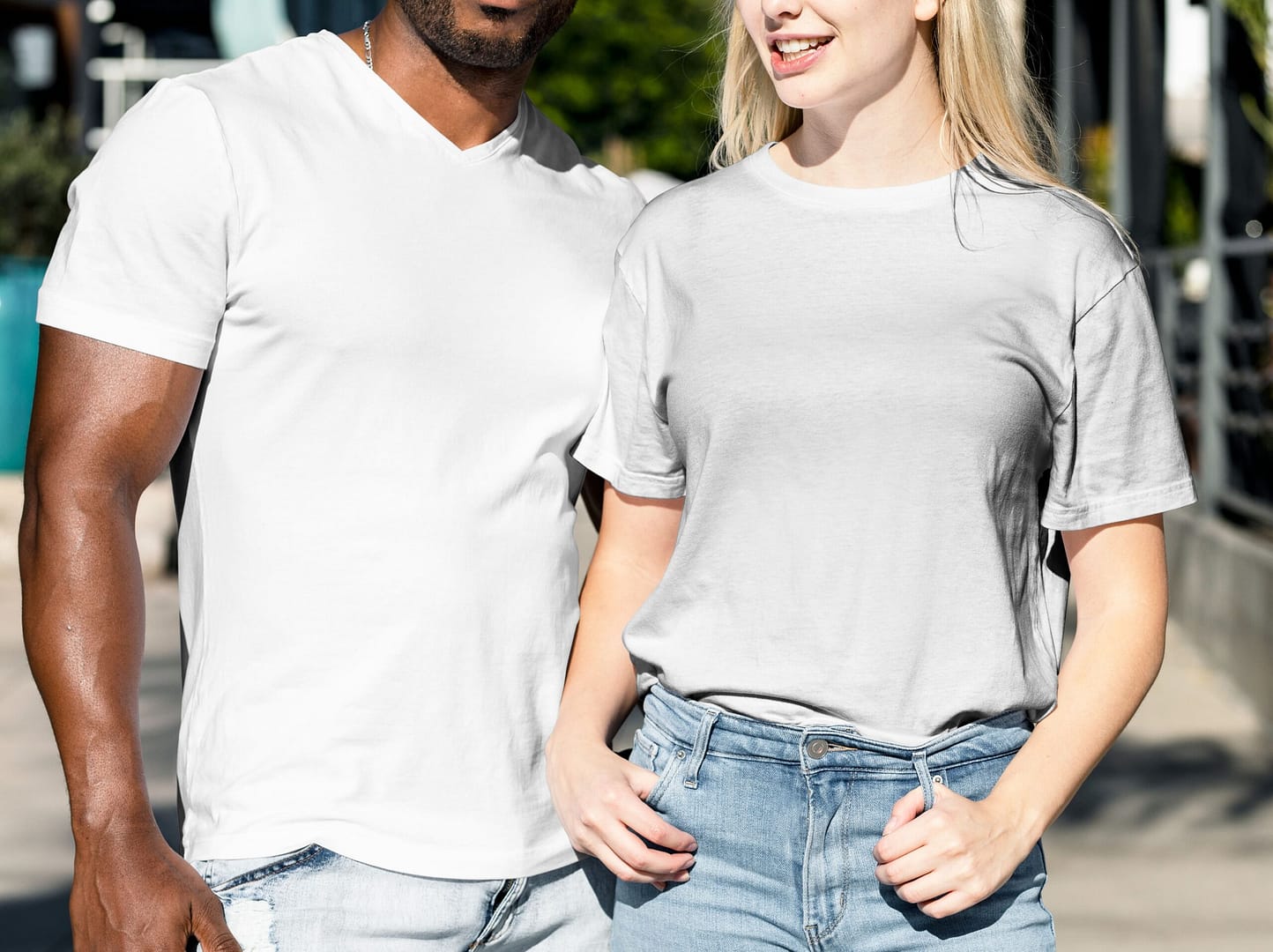In the realm of sustainable fashion, one fabric has been making significant strides and garnering attention from eco-conscious consumers and designers alike: Tencel. Known for its environmental credentials and superior performance, Tencel is increasingly seen as a cornerstone of eco-friendly clothing and textiles. This article aims to provide a comprehensive overview of Tencel fabric, covering everything from its production process to its properties, environmental impact, and applications in the fashion industry.
What is Tencel Fabric?
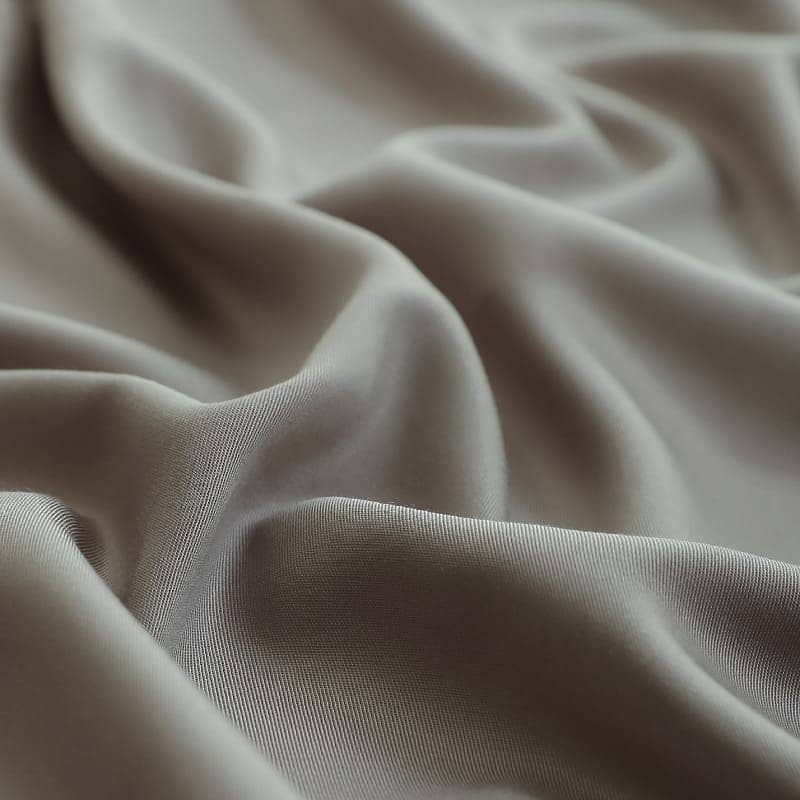
Tencel is the brand name for a type of lyocell, a fiber made from the cellulose found in wood pulp. The brand is owned by Lenzing AG, a company based in Austria that is a global leader in the production of environmentally friendly fibers. Tencel fabric is produced by dissolving wood pulp using a non-toxic organic solvent solution in a process that is significantly more sustainable than conventional fabric production methods.
The wood used to make Tencel is typically harvested from managed forests where trees are grown on marginal land not suitable for agriculture and are certified by sustainable forestry initiatives. The process of turning wood pulp into fiber is what sets Tencel apart. It involves an advanced closed-loop system that recycles almost all the solvent used in the process, minimizing environmental waste and energy consumption.
In comparison to other fibers, Tencel boasts a lower environmental impact. It requires less energy and water than cotton, and unlike synthetic fibers like polyester, it is biodegradable and comes from renewable sources. The fabric’s production does not contribute to habitat destruction or require the use of harmful chemicals, making it a favorite among eco-conscious brands and consumers.
How Is Tencel Fabric Made?
The production of Tencel fabric is a model of efficiency and environmental consciousness, largely due to its innovative closed-loop process. This section will explore how Tencel fabric is made, emphasizing the sustainable techniques that set it apart from traditional textile manufacturing.
The Closed-Loop Process
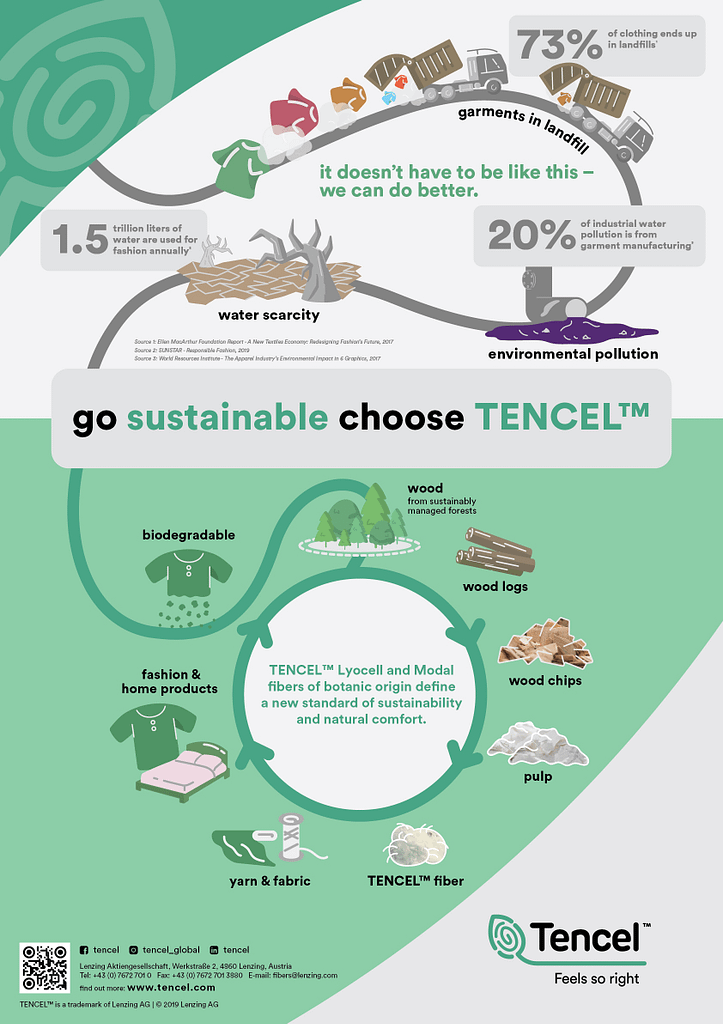
Tencel is produced through a solvent spinning process that uses a non-toxic organic solvent to dissolve wood cellulose, creating a solution that can be spun into fibers. Here’s how it works:
- Wood Harvesting: The wood pulp used in Tencel production comes from the sustainably managed and certified forests. The trees are primarily eucalyptus, beech, and spruce, which grow quickly and require no irrigation or pesticides.
- Pulping: Wood chips are pulped and dissolved in a solvent to produce a sticky cellulose solution. Unlike the harsh chemicals used in some other fiber processes, the solvent used for Tencel is non-toxic and safe.
- Dissolving: The cellulose solution is then pushed through tiny holes to form fibers. This part of the process is crucial as it defines the fiber’s properties and end-use.
- Spinning: Once the fibers are formed, they are washed and dried. The solvent is almost completely recycled back into the process loop, minimizing waste and emissions.
- Finishing: Finally, the fibers are processed into yarn, which can be woven or knitted into Tencel fabric. The fabric can then be treated with various finishes to enhance its texture and performance.
Environmental and Efficiency Highlights
The closed-loop production process of Tencel recovers and reuses over 99% of the solvent involved, significantly reducing the environmental footprint compared to more traditional fiber manufacturing processes. The minimal waste and low emissions associated with its production make Tencel one of the most environmentally friendly fabric choices available.
Moreover, the efficiency of the process and the sustainable management of natural resources ensure that Tencel fabric remains both eco-friendly and economically viable. This balance of sustainability and practicality is key to its growing popularity in the textile industry.
Environmental Impact
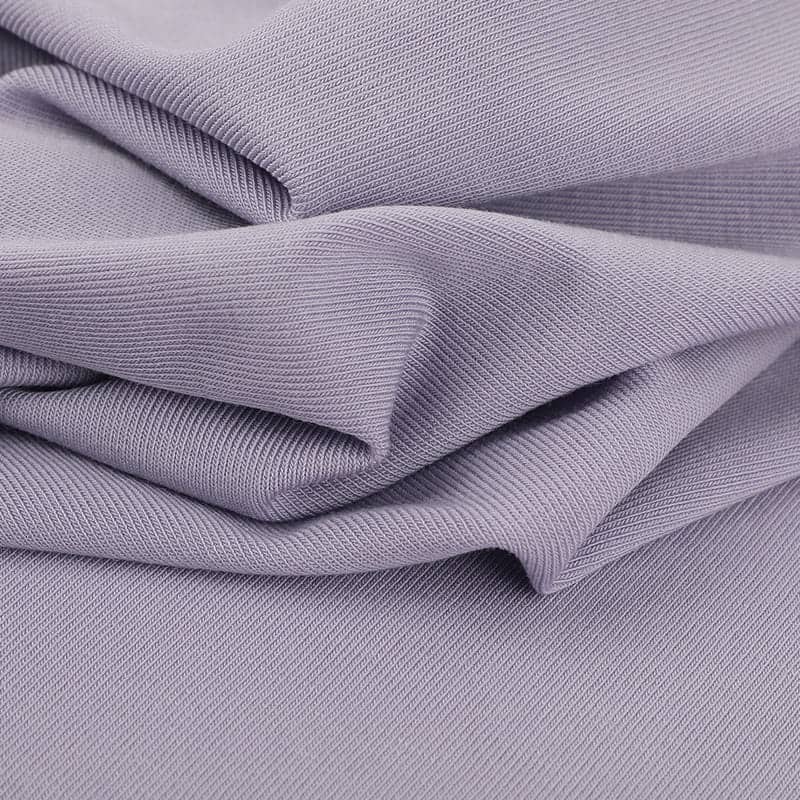
Tencel’s reputation as an environmentally friendly fabric is well-deserved, thanks to its sustainable production processes and the various ecological benefits it offers. This section examines the environmental impact of Tencel, comparing it to other commonly used fabrics and highlighting why it stands out as a superior eco-friendly option.
Reduced Water Usage
Water conservation is a significant advantage of Tencel production. Compared to cotton, which is notoriously water-intensive, Tencel requires far less water. The growth of eucalyptus trees, which are commonly used to produce Tencel, does not require irrigation or pesticides, significantly reducing the water footprint from the very start of the production process.
Low Chemical Usage
The closed-loop process used to produce Tencel minimizes the release of waste and emissions by recycling the solvent used in the fiber’s production. This process contrasts sharply with the production of synthetic fibers, which often involves toxic chemicals that can pollute water and air. Similarly, unlike many bamboo processes that use harmful chemicals to break down the plant, Tencel’s solvent is non-toxic and is almost completely recycled.
Carbon Footprint and Biodegradability
Tencel fibers are derived from trees, which naturally absorb carbon dioxide from the atmosphere, contributing to the reduction of greenhouse gases. Furthermore, Tencel is biodegradable and compostable under industrial, home, soil, and marine conditions, ensuring that it returns to nature without leaving harmful waste behind.
Certifications and Standards
Tencel fabrics often come with various environmental certifications that attest to their sustainable attributes. These include:
- OEKO-TEX®: Certifies that Tencel fabrics are free from harmful chemicals.
- FSC and PEFC: Ensure that the wood pulp used for Tencel is sourced from managed forests that are sustainably maintained.
- EU Ecolabel: Awarded to products meeting high environmental standards throughout their life cycle.
These certifications help consumers identify products that meet stringent environmental standards, providing assurance that their fabric choices are genuinely eco-friendly.
Comparison with Other Fabrics
When compared to cotton, polyester, and traditional rayon, Tencel has a lower environmental impact across various metrics, including water usage, chemical treatment, and carbon dioxide emissions. Its production process is designed to be more sustainable and less harmful to the environment, making Tencel a preferred choice for those seeking to minimize their ecological footprint.
Tencel not only meets the needs of environmentally conscious consumers but also offers manufacturers and designers a sustainable alternative that does not compromise on quality or performance.
Properties and Benefits of Tencel Fabric
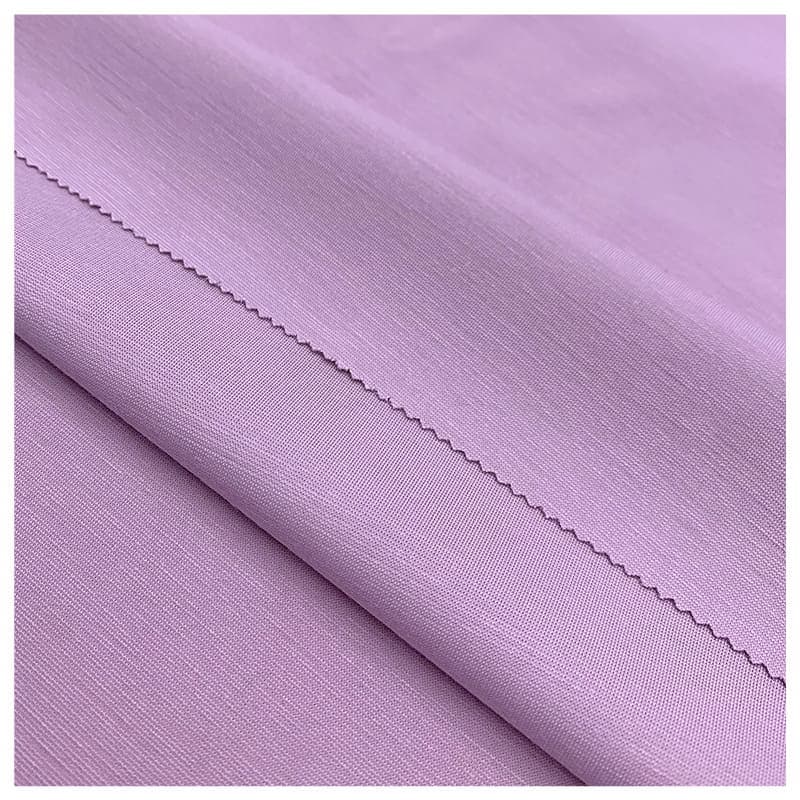
Tencel fabric is not only lauded for its environmental credentials but also for its exceptional properties that make it a highly desirable material in the textile industry. This section delves into the physical and chemical properties of Tencel, outlining the benefits that make it a standout choice for a variety of applications.
Physical Properties
Tencel fibers are known for their natural comfort and luxurious softness, which often compare favorably to silk. The fibers are inherently smooth, which reduces skin irritation and makes Tencel fabric gentle enough for sensitive skin. Additionally, Tencel is strong and durable, providing longevity to garments and products, which contributes to sustainability by reducing waste and the need for frequent replacements.
Moisture Management
One of Tencel’s most notable properties is its ability to manage moisture. The fibers are hydrophilic, naturally absorbing moisture with excellent wicking abilities, which keeps the skin dry and comfortable. This makes Tencel particularly suitable for activewear, intimate garments, and bedding, as it can help regulate body temperature and reduce bacterial growth.
Breathability and Thermal Regulation
Tencel fabric is highly breathable, which enhances its comfort level, particularly in warm weather. The fibers are structured to regulate absorption and release of moisture, contributing to thermal regulation. This unique characteristic ensures that Tencel clothing offers warmth in winter while remaining cool and airy in summer.
Hypoallergenic and Biodegradable
Due to its natural origins and smooth fiber surface, Tencel is hypoallergenic. It minimizes the risk of allergic reactions, making it an ideal choice for baby clothing, bedding, and other applications where skin sensitivity is a concern. Furthermore, as a biodegradable material, Tencel breaks down naturally without leaving harmful residues in the environment.
Color Retention
Tencel fibers are highly colorfast, which means that fabrics made from Tencel retain their color well, even after multiple washes. This property ensures that garments look new for longer, appealing to consumers who prioritize both style and sustainability.
Benefits for the Environment and Consumers
The combination of Tencel’s favorable physical properties and its environmental benefits creates a compelling case for its use across various sectors. For consumers, choosing Tencel not only means opting for a fabric that’s comfortable and durable but also one that supports environmental sustainability. For manufacturers, Tencel offers a material that meets consumer demands for quality and eco-friendliness without compromising on performance.
Tencel’s properties make it versatile enough to be used in everything from high-fashion garments to everyday wear and home textiles, proving that sustainable materials can indeed meet the highest standards of quality and comfort.
Uses of Tencel Fabric
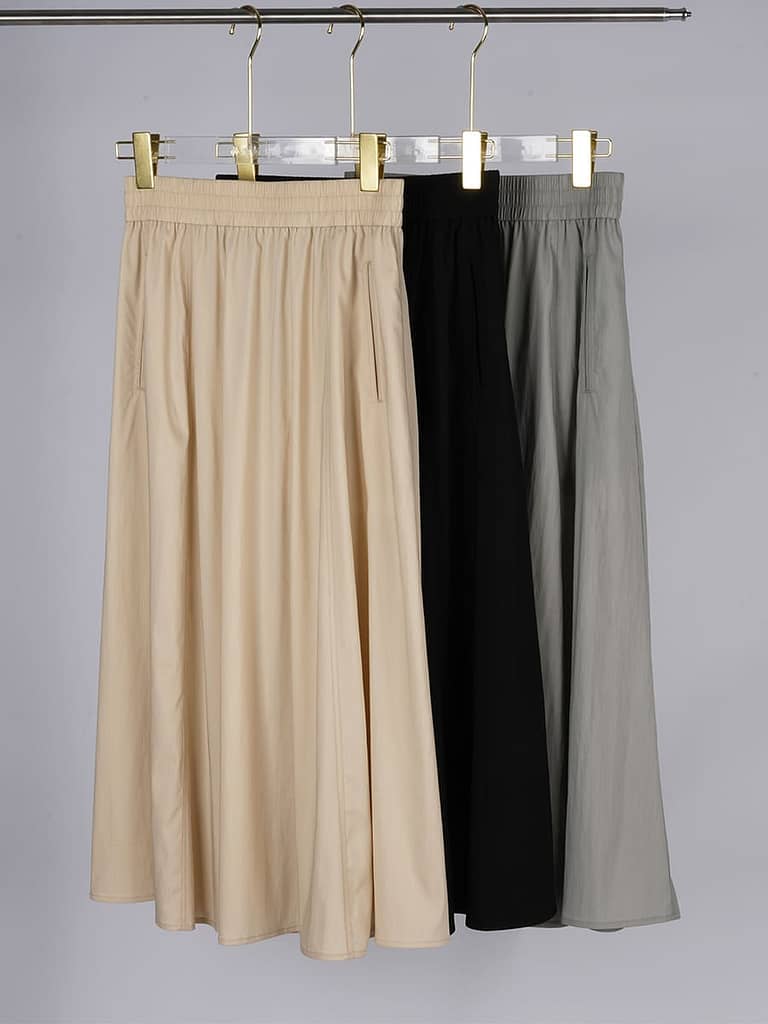
Tencel’s unique properties make it a versatile fabric suited for a wide range of applications. This adaptability has allowed it to be embraced not just in the fashion industry but in various other sectors as well. Here we explore the different uses of Tencel fabric and how its features are leveraged across diverse products.
Apparel
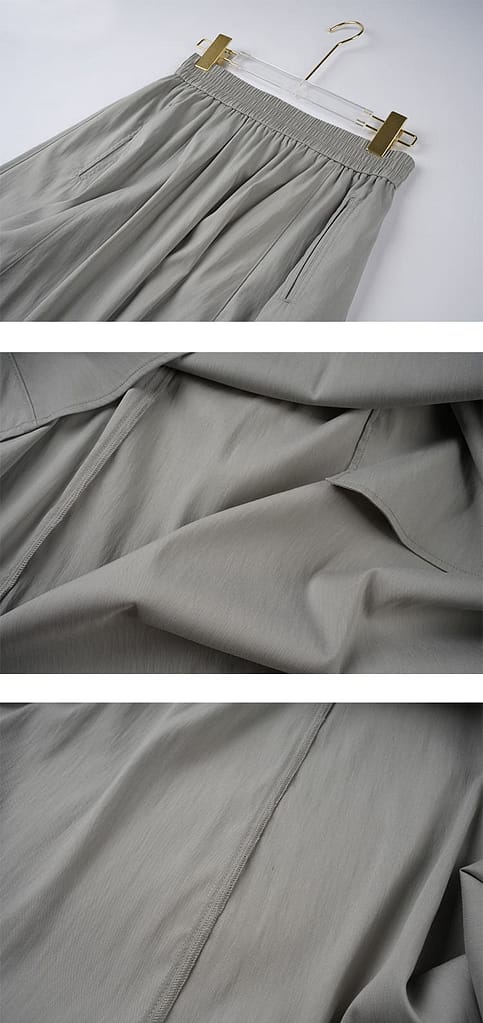
In the fashion industry, Tencel is prized for its softness, strength, and environmental profile. It is commonly used in the manufacture of:
- Activewear: Due to its moisture-wicking properties and breathability, Tencel is ideal for sports and fitness apparel.
- Casual Wear: The comfort and durability of Tencel make it suitable for everyday clothing like T-shirts, dresses, and trousers.
- Luxury Fashion: The fabric’s silky texture and drape make it a favorite for more sophisticated, high-end fashion items.
- Intimate Apparel: Tencel’s softness and hypoallergenic properties are perfect for underwear and sleepwear.
Home Textiles
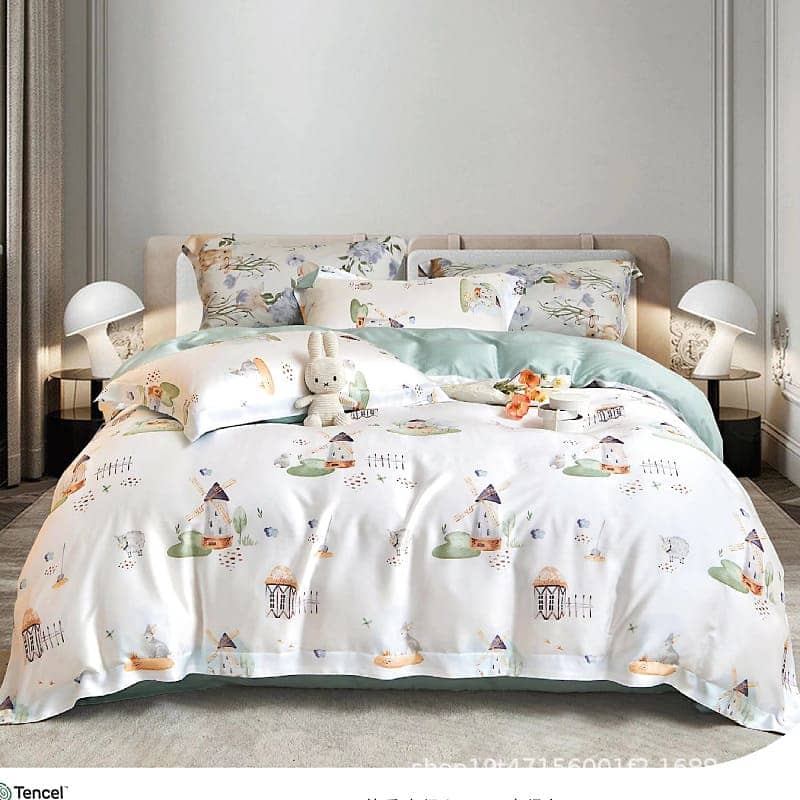
Tencel’s applications extend beyond clothing into home textiles, where its properties are equally beneficial:
- Bedding: Sheets, pillowcases, and duvet covers made from Tencel are popular for their softness and thermal regulation capabilities, offering a comfortable sleep experience.
- Towels: The high absorbency and quick-drying nature of Tencel make it suitable for towels and bathrobes.
- Upholstery: Tencel is used in upholstery for furniture due to its durable and colorfast nature, which can withstand regular use and cleaning.
Non-Apparel Uses
The benefits of Tencel also find relevance in other, less conventional areas:
- Medical Textiles: Due to its hypoallergenic nature and smooth fiber structure, Tencel is used in medical dressings and in fabrics where skin sensitivity is a concern.
- Industrial Applications: The strength and absorbent properties of Tencel are advantageous in various industrial products, including filters and protective clothing.
Tencel’s widespread application across multiple industries not only demonstrates its functional superiority but also highlights its role in pushing the boundaries of sustainable practices in textile manufacturing and beyond.
How Much Does Tencel Fabric Cost?
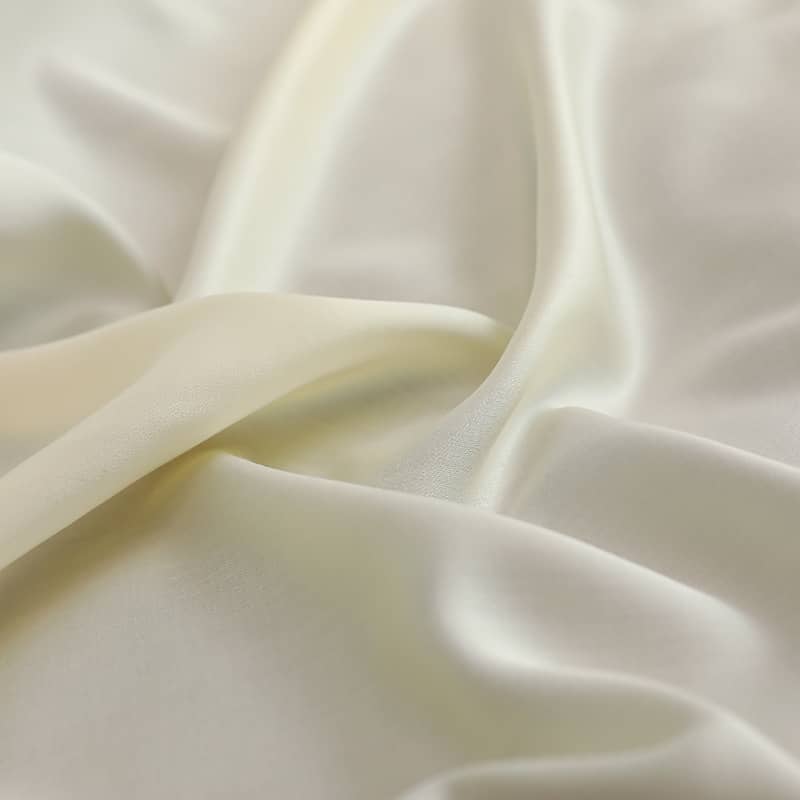
Understanding the cost of Tencel fabric is crucial for both consumers and businesses considering incorporating this sustainable material into their products. This section explores the factors that influence the pricing of Tencel fabric and how it compares to other textiles.
Factors Influencing Cost
- Production Process: The advanced technology and environmentally conscious methods used in Tencel production, particularly the closed-loop system, can make it more expensive than fabrics produced with less sustainable practices.
- Raw Materials: The quality and source of the wood pulp, along with the sustainability certifications it carries (like FSC or PEFC), also affect the cost. Sustainable forestry practices tend to be more costly but are crucial for maintaining Tencel’s eco-friendly profile.
- Market Demand: As demand for sustainable products grows, the price of materials like Tencel that are perceived as eco-friendly can increase due to their popularity and the costs associated with scaling up production responsibly.
- Technological Innovations: Investments in research and development to improve the efficiency and sustainability of Tencel production can also add to the cost but may reduce prices in the long term as processes become more streamlined.
Comparison with Other Fabrics
- Cotton: While conventional cotton is often cheaper due to its widespread production, organic cotton prices are comparable to or higher than Tencel because of the stringent requirements for organic cultivation.
- Polyester: Synthetic fibers like polyester are generally less expensive than Tencel due to their lower production costs and the scale of their manufacturing. However, they lack the environmental and comfort benefits of Tencel.
- Other Eco-Friendly Fabrics: Tencel is competitively priced when compared to other sustainable alternatives like organic linen or hemp, which also involve complex cultivation and production processes.
Economic Viability and Sustainability
While Tencel may be more expensive than some traditional materials, its cost is justified by its environmental benefits and the superior quality it offers. For businesses focused on sustainability, investing in Tencel can also enhance brand value and appeal to eco-conscious consumers, potentially leading to higher customer loyalty and market share.
As we explore the impressive benefits and sustainable features of Tencel fabric, it’s clear that this material is an excellent choice for both environmentally conscious consumers and innovative designers. At Valtin Apparel, we are committed to combining sustainability with style. We offer specialized manufacturing services tailored to your needs, from low MOQs to fast sample production. Connect with us to learn how we can help you transform Tencel fabric into your next standout collection, enhancing both the quality and eco-friendliness of your apparel brand.



